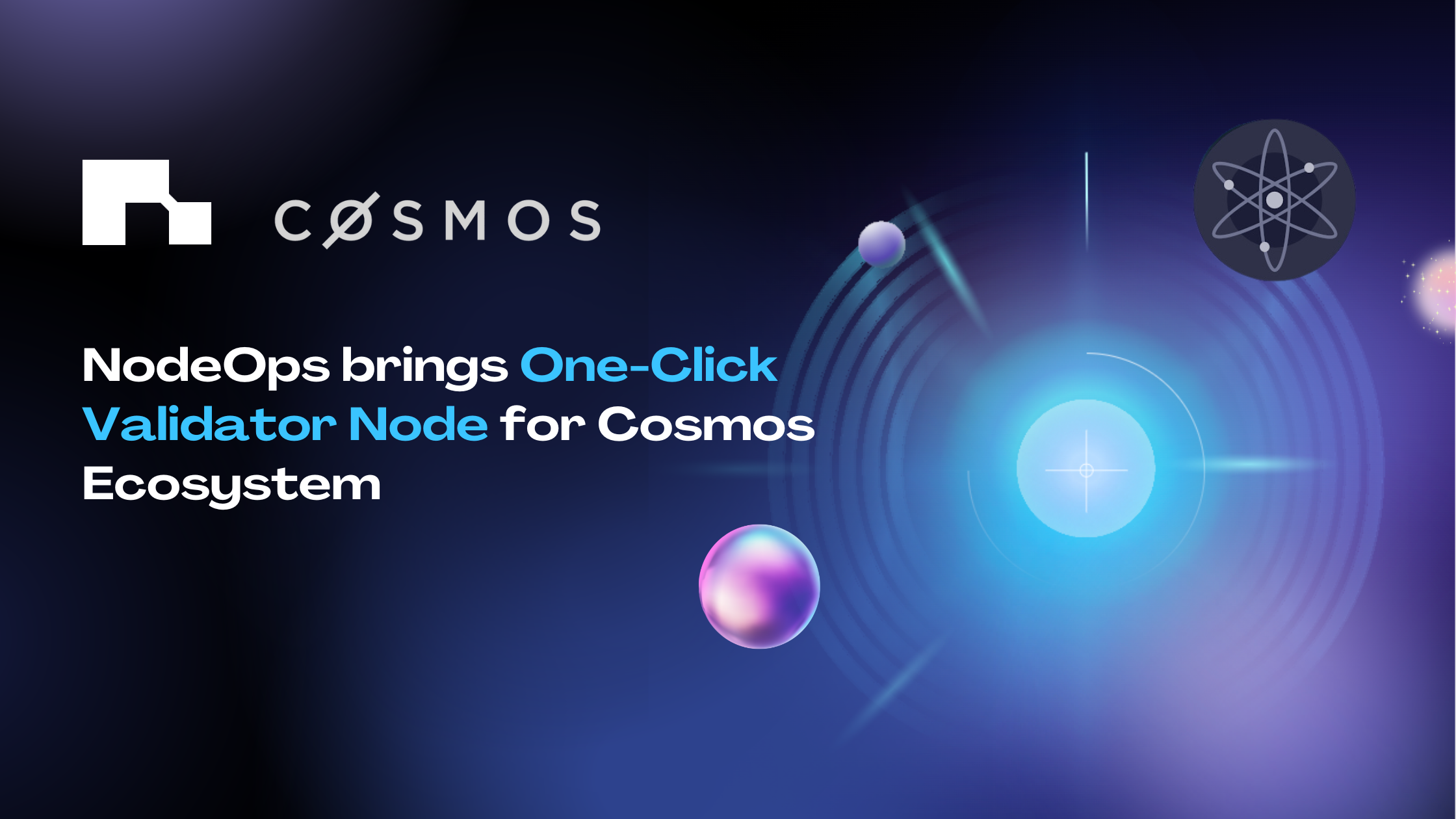One of the leading networks in web3 today, Cosmos brings together scalable, interconnected, and autonomous blockchains. A Layer 0 blockchain that helps build and houses Layer 1 ‘application’ blockchains, currently its ecosystem hosts about 50 chains and over 240 dApps.
Cosmos delivers this scale by using a consensus mechanism called Tendermint Core to process an unprecedented amount of transactions every second. Each blockchain in the ecosystem uses Tendermint to agree on the state of the ledger. ‘Validator’ nodes are a crucial part of the network, tasked with adding new blocks to the chain through an automated voting method. Validators also earn a hefty reward when they do their job successfully, so it’s quite a lucrative endeavor for anyone.
But running a node on Cosmos can seem arduous, especially for the non-tech savvy. NodeOps - specializing in simplified infrastructure and one-click node deployment for operators and developers - helps you out!
Before we get to the how, let’s get past the what.
Types of Nodes in the Cosmos Ecosystem
There are generally three main types of nodes that you can run in the Cosmos network. Each of these have unique purposes, even when their responsibilities may be shared in some cases.
Full Nodes: The easiest to understand, these keep a complete historical record of blockchain transactions and state. Their work includes verifying transactions against the Cosmos network guidelines before they are put into a block, relaying the latest blocks and transactions through the network, and providing essential information to other nodes and network clients to maintain transparency and accessibility.
Validator Nodes: They are specialized full nodes that operate on the consensus side by proposing blocks and voting on said proposals. Every round of block creation picks a validator node, who proposes a new block. Other validator nodes vote on this proposal and accept or reject it; validators also similarly participate in governance decisions. Of course, validators stake their coins as a security deposit to take part in block creation and maintaining the network’s security. While validators can be rewarded for their contribution, their stake in the network can be slashed if they are suspected of acting maliciously or if they fail to fulfill their designated duties.
Sentry Nodes or Relay Nodes: Another special kind of full node, Sentry nodes act as a protective buffer of sorts for the validator nodes on Cosmos; they shield validators from direct exposure to the internet so chances of DDoS and other attacks are lessened, and they also manage and optimize network connections for said validators, ensuring they can connect with the rest of the network without revealing their IP addresses.
As you may be able to gather, each of these nodes have their own way of contributing to the transparency, security, and efficiency of the Cosmos network. You can choose which type to run based on your goals and resources.
Of course, this is easier said than done. Here’s a look at all the hoops you have to jump through:
Running a Cosmos Validator Node without NodeOps
Let’s take a Cosmos validator node for example. As we mentioned, the process is lengthy, from downloading binaries to getting reliable RPCs and waiting for the syncing process to wrap. The steps involve:
Acquiring a server to meet the minimum hardware requirements including specialized CPU, memory, storage, and connectivity.
Acquire a stable operating system.
Install necessary dependencies.
As the Cosmos SDK is built on Go, you would need to install that as well, followed by cloning the Cosmos SDK repository and installing that.
Initialize your node and create configuration and data directories. Then Download the Genesis file and configure your node.
Add Seed nodes.
Open Firewall ports and make sure the node can connect with the larger network.
Start your node and begin syncing with the blockchain. The syncing process can take anywhere between 24 and 48 hours.
Keep checking logs and monitor the health of the node.
Once syncing is done, create your validator by staking tokens.
So the process is harrowing, requiring significant effort and time. NodeOps brings nothing less than a revolution here, creating a state-of-the-art solution to run Cosmos nodes.
For the first time in history, NodeOps offers a one-click node deployment for all types of nodes on Cosmos. Across the Cosmos blockchains, deploying anything from a full node to a validator node to a RPC node is now easier than ever.
Now, we get to the how.
One-Click Node Deployment for Cosmos Validator with NodeOps
The process is very, very simple. Here are the handful of steps to follow:
Sign in to NodeOps.
Select your chain.
Fill in your node details and subscribe.
Wait for the syncing to finish, which takes around 30 minutes.
Connect your wallet for staking.
Execute the ‘Create Validator’ transaction.
And just like that, you have set up your node with NodeOps. The process is short and easy, as compared to the long list of steps we mentioned above. Still not sure how to proceed? We have a handy video guide for you that takes you through our platform!
Already dubbed the Internet of Blockchains, as web3 expands, Cosmos will play an even bigger role. This is because the network solves two of web3’s biggest issues today- scalability and interoperability. Keeping that in mind, NodeOps’s innovation is certainly the need of the hour, simplifying node deployment and increasing accessibility for users and developers.
All you Cosmos chains out there, do reach out to us if you want to be integrated on our Console!
Find out more about NodeOps on our website!


